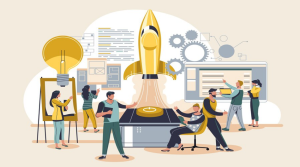Artificial Intelligence (AI) is changing industries, and knowing the right frameworks and libraries is crucial for developers who want to stay ahead. In 2025, several AI tools stand out for their flexibility, efficiency, and innovation. Here’s a guide to the top AI frameworks and libraries to learn this year.
TensorFlow
Developed by Google, TensorFlow is a leading tool in deep learning. It’s known for its powerful ecosystem, deployment features (TensorFlow Serving, TensorFlow Lite), and strong community support. In 2025, expect improvements in its Keras API, better distributed training, and closer integration with cloud platforms.
Why learn it? TensorFlow is flexible, scalable, and widely used in research and industry.
PyTorch
PyTorch has become a favorite for its dynamic computation graph, making it easier to debug and more flexible, especially in research and development. Backed by Meta AI, PyTorch is supported by a large research community. Expect growth in its industrial applications in 2025 with enhanced production capabilities through TorchServe.
Why learn it? PyTorch is research-friendly, has a strong community, and integrates well with Python, making it a popular choice for developers.
Keras
Keras is a high-level neural network API integrated with TensorFlow. It’s designed for fast prototyping and experimentation, with an easy-to-use interface that suits both beginners and professionals.
Why learn it? Keras is perfect for rapid model development and easy-to-understand neural networks, making it ideal for both new learners and experienced developers.
FastAI
Built on PyTorch, FastAI focuses on making deep learning simpler. It’s great for quickly building and deploying models without needing to write much code.
Why learn it? FastAI provides an easy-to-use interface for implementing deep learning models, making AI accessible to all levels of developers.
Scikit-learn
Scikit-learn is a go-to library for classical machine learning tasks like regression, classification, and clustering. It’s built on Python’s NumPy and SciPy, and is perfect for structured data analysis.
Why learn it? Scikit-learn is lightweight, well-documented, and offers a wide range of machine learning methods, from regression to clustering.
Hugging Face Transformers
Hugging Face has become a leader in Natural Language Processing (NLP). Its Transformers library offers pre-trained models for text generation, sentiment analysis, and translation.
Why learn it? Hugging Face is key for anyone working in NLP, offering pre-trained models and easy access to powerful AI tools for language-based tasks.
OpenCV
OpenCV is a top library for computer vision, used for image processing, object detection, and facial recognition. It’s essential for anyone working on visual AI projects.
Why learn it? OpenCV is widely used for computer vision applications and offers powerful tools for handling images and video.
MXNet
MXNet is a scalable deep learning framework that supports multiple programming languages, including Python, Scala, and Julia. It’s designed for high-performance AI applications.
Why learn it? MXNet is efficient, scalable, and great for large-scale AI tasks, making it a solid choice for performance-focused developers.
Conclusion
The best AI frameworks and libraries in 2025 cover a wide range of applications, from machine learning and deep learning to NLP and computer vision. Whether you’re just starting or are an experienced developer, mastering these tools will help you create innovative AI solutions.





